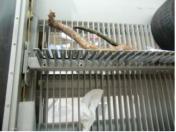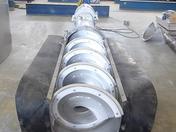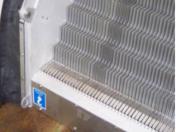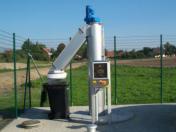Mechanical wastewater treatment screens
The need for coarse and fine screens is caused by the presence of various mechanical ingredients in the composition of wastewater incoming for treatment or pumping. These components make normal operation of subsequent structures and equipment difficult or impossible.
For their removal, wastewater mechanical treatment plants are used. Screens are an important component of these plants. The predominant area of their application is the treatment of municipal wastewater.
The waste characteristics vary greatly depending on the sources of pollution, such as the sewerage system (combined, semi-separate or separate), and also on the nature of the industrial wastewater, including their pre-treatment prior to discharge into the sewage system.
According to the design features, the screens are divided into several types. The distinguishing of coarse or fine screens is due to the width of the spacing through which the waste not retarded by the screen passes. Fine screens are usually installed after coarse screen for protective purposes.
Types and scope of application of the screens
- Coarse screen (installed at the inlet to the pumping stations or upstream of the fine screens).
- Drum screen of a wide range of treatment (as part of a mechanical treatment assembly).
- Screw screens are used to retain waste and then extract it at low capacity wastewater treatment plants.
- Fine band screens (installed at the plant inlet in small or medium depth channels).
- Fine step screens (installed at the plant inlet).
- Vertical screens are highly specialized and designed for underground pump stations.
- Drum sieves remove fibrous and similar inclusions from industrial wastewater, and are also used to pretreat recycled water.
The process of design, construction and reconstruction of a wastewater mechanical treatment plant requires engineering support, including the selection of the screen type, taking into account the efficiency requirements for further treatment stages, calculation of hydraulic parameters, selection of the optimum option, design, procurement and supply, installation, and communication with the manufacturer over warranty cases. These functions are usually performed by a whole chain of firms: a manufacturer, intermediate seller, design organization, installation organization, service center of the manufacturer in the delivery territory.
My project fully provides all these functions due to its extensive experience in the implementation of various types of screens: step, rack, drum with rotating and stationary basket, arc, drum percolators, complete mechanical treatment plants, etc.
This experience allows us to choose the optimal solution for reconstruction or new construction of wastewater mechanical treatment plants.





